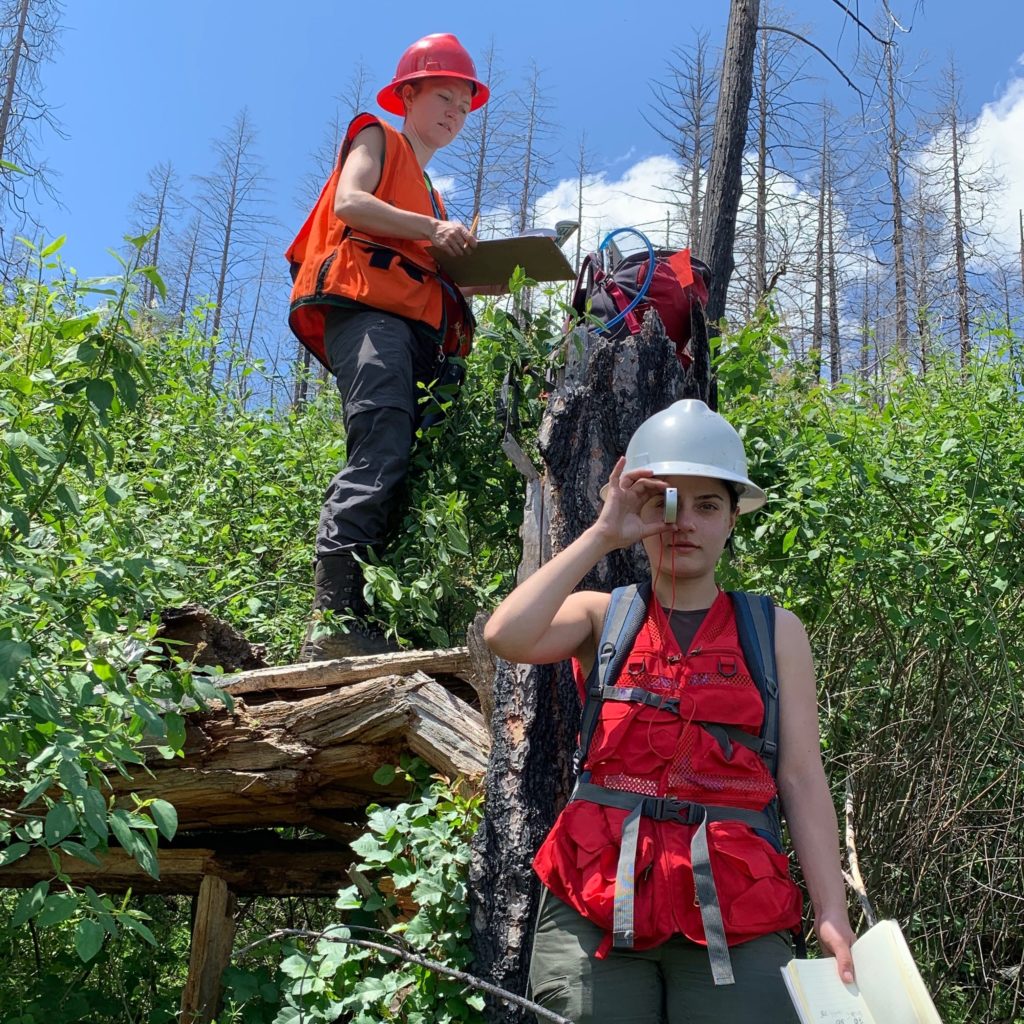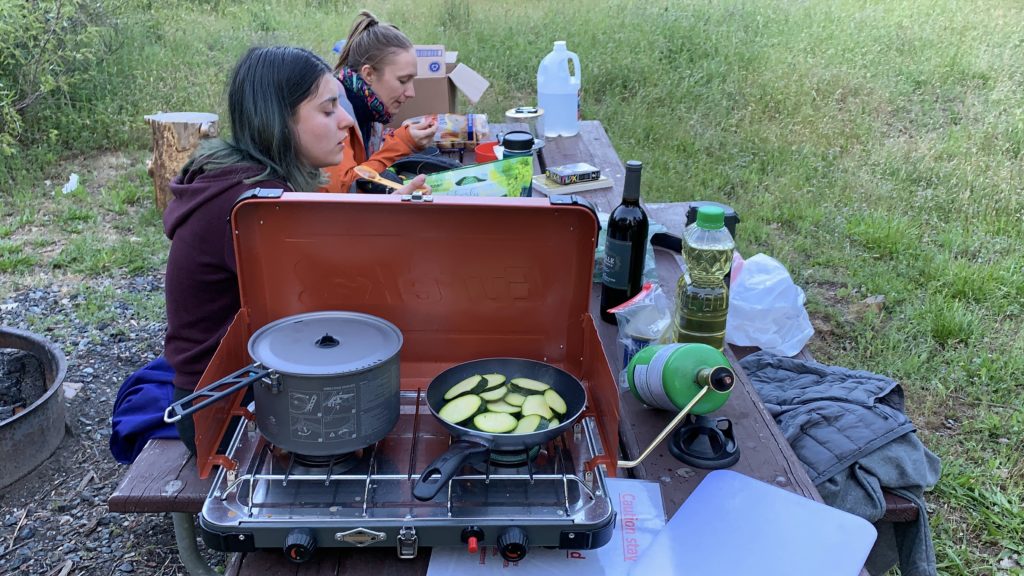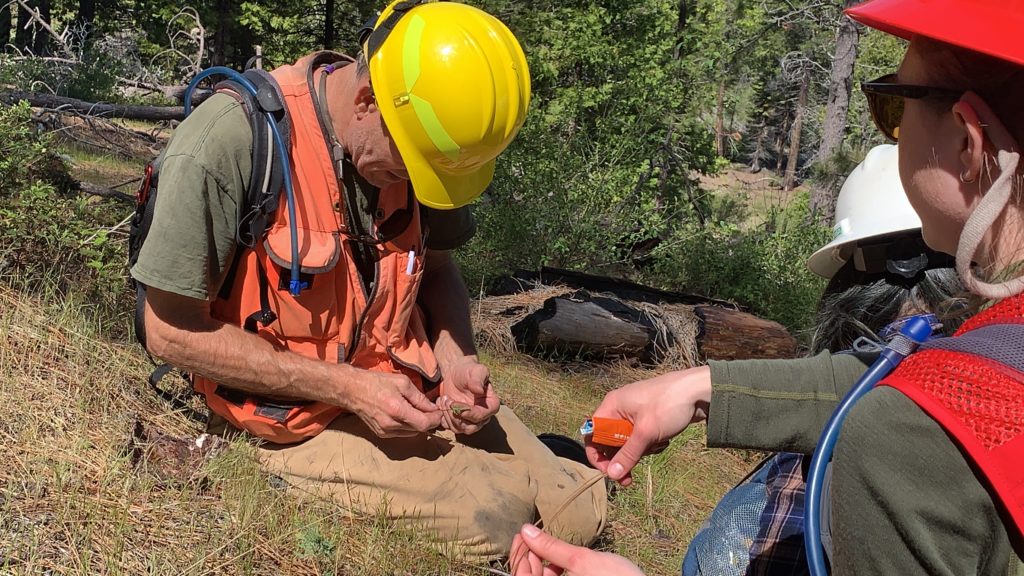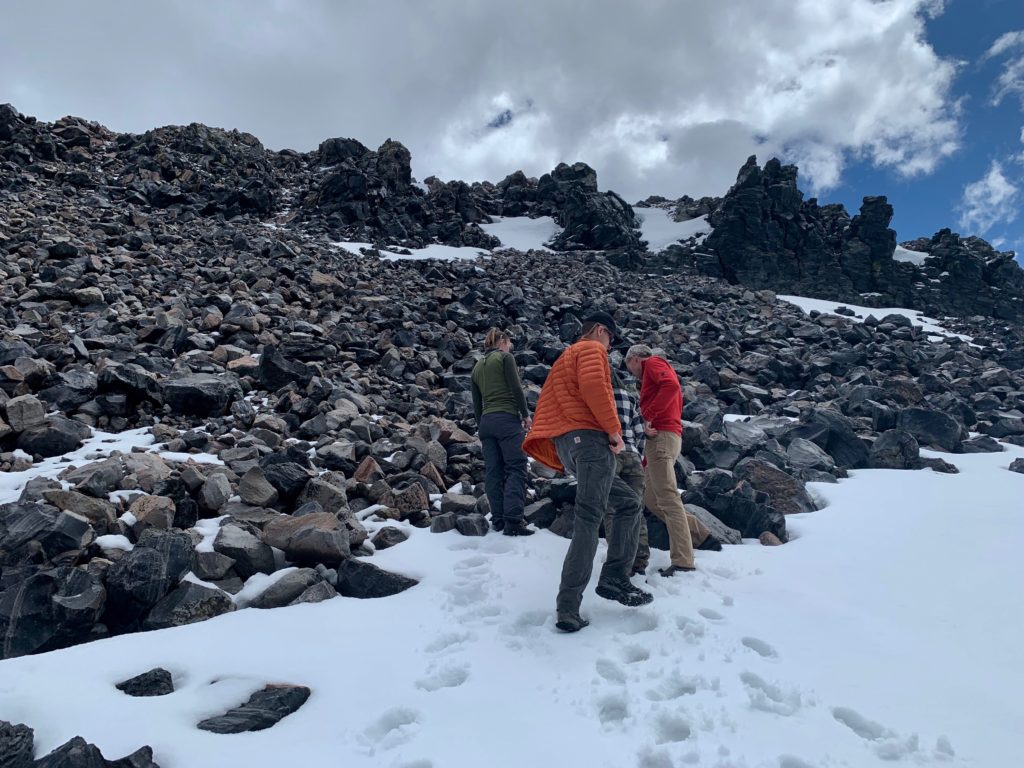When I present my research to the F&ES community, all I will see is the flashback of this summer: a summer I spent in California with a Californian man who is like a tree and three women from Georgia, Sweden, and Boston respectively. It was a summer with heat and sweat, tons of hiking and driving, mistakes and blames. It was also a summer with loads of joys and amusements, learnings and growth, and satisfaction and achievements.
It all began with a phone call with a Californian man named Hugh Safford. With a strong interest in forest disturbances and fire ecology, it didn’t take me long to identify him as the potential collaborator and supervisor of my summer research in addition to Dr. Ashton, my primary academic advisor at Yale F&ES. Who would have been a better match for me than Hugh Safford, the Regional Ecologist of the Forest Service Region 5, a professor at UC-Davis, an expert in fire ecology?! During our first phone call, he told me that he was a rock climber with 40 years of experience, and I could climb with him. I was just as excited about the climbing as the research. We did not hesitate too much to identify my research topic, coniferous regeneration after the Rim Fire, the largest fire ever to burn in the Sierra Nevada.
Fire is an important subject to study. According to Greek mythology, the Titan Prometheus stole fire from the gods and gave it to humans, a gift which contributed to the prosperity and the development of humanity. Not only was Prometheus punished from his theft, but Zeus also punished humans through befalling toil, illness, war, and death to the human races. Fire is the source of lives and the cause of death, not just in Greek mythology, but also in reality. On the one hand, fires help fire-resistant conifers to open serotinous cones and eliminate other tree species competitors. Constant low-severity fires reduce fuels on the forest floor and exclude future severe fires. On the other hand, the notorious Camp Fire in the winter of 2018 took 80 lives, destroyed more than 18,500 structures, and cost 16.5 billion dollars. According to fire ecologists, severe fires are becoming more and more frequent because of the past forest management practice of fire exclusion and the influences of climate change (Coppoletta et al. 2016 and Miller and Safford 2008). As the US contains 766,026,682 acres of forests (FAO 2015), understanding the current conditions in forests, especially post-fire forests, helps us manage for fire-resilient ecosystems and prepare for fires in the future.
My focus fire, the Rim Fire, occurred during August 2013, burning more than 257,000 acres of the Stanislaus National Forest and Yosemite National Park. Like other severe fires in the western United States, it killed ponderosa pine, Jeffery pine, sugar pine, white fir, red fir, and other common tree species in the Sierra Nevada. Based on previous studies, conifer species tend to regenerate less in areas more severely burned. As a result, less coniferous seedlings will be observed in these regions. As opportunists, multiple shrub species, like deerbrush, mountain mystery, etc. occupy the newly open areas after fires and shade out new seedlings. In addition, the live trees large enough to bear seeds would also be less common because of the high mortality in fires. We, a team of myself and three others, are taking the first step to evaluate these claims by collecting floristics and environmental data in 140 60-meter squared plots in the Stanislaus National Forest duirng late May to late August.

I first met two of my teammates and Hugh in a restaurant for dinner in Lee-Vining, CA, a small town meant for tourists to rest and fuel up on their way to Yosemite. As I got off my car, I walked to the table with three people because I recognized Hugh from his photo. Interestingly, he wore a Mammoth jacket while our destination of this trip was Mammoth Lakes. Across the table, there was a young woman from the country of Georgia. She was finishing her plate of ribs and mashed potatoes. Her name was Lika. The other young woman sitting next to Lika was Michelle, she is from Sweden. They were both at my age. Here was our team during our first trip to the Stanislaus. At that time, I didn’t have a slight idea of how much adventure was ahead of us.
Our first trip started with a few days of training in Mammoths Lake and continued with data collection in the Stanislaus National Forest. Before going to the forest, we already had heard so much about grizzly bears. Bears are very cute in BBC documentaries, but they can be very annoying and even dangerous in reality. Conducting field research in bear country, we learned that we had a risk of being attacked by bears, especially by a mother bear with her cubs. In addition, bears are attracted to human food. All the food we brought had to be stored in bear boxes or bear-proved coolers. Otherwise, we would have a conflict with bears for our food. Hugh once told us a story that his car was torn apart by a bear because he accidentally left a piece of snack wrapper in the car. When we packed into the backcountry, we had to consider the size and quantity of our food which could sustain our lives for 8 days. Because of the bear situation, Lika and Michelle had been eating beans for the first trip.


Besides bears, another source of danger is falling trees. A forest after a fire is full of dead standing trees, which are called snags. Depending on the severity of the fire, the amount of snags varies from none to half of a dozen in one plot. All the snags have the potential to fall, and we definitely didn’t want the falling snags to hit us. Therefore, we had to wear hard hat. Lika was very concerned about the snags. She always expressed her anxiety to us and suggested safer alternative routes for our travel.
Although poison oak is not as dangerous as bears and snags, I think it is one of the most annoying plant species ever in the western forests. With leaflets that somewhat look like oak leaves, they grow as an understory plant or a vine, sometimes growing up to meters on a tall tree. Its status in the forest to me is equivalent to the status of a rat in a kitchen. Although it does not eat your food, it can give you rashes for days, much like poison ivy on the east coast. Our first trip in the forest was full of poison oak; dozens of them appeared on our way to the plots. We could not avoid but trample over them. Luckily, nobody got any rashes by the end of the trip.
With extra care on bears, snags, and poison oaks, our first trip was quite successful with Hugh’s accompany. The more time I spent with him, the more I appreciated choosing him as my collaborator. He was very energetic and sympathetic. He cared about us and fulfilled our needs when we had any. Besides training us, he took us to hot springs, climbing, and hiking to vista points. He was also full of experience, professionally and adventure-wise. He shadowed us like a big oak tree during our first trip. He had all the qualities of a supreme leader I wanted to have. I quickly identified him as my professional role model. I would like to become a tree and shadow other people. With Hugh answering our questions and making judgments on navigation, we successfully collected data from about 25 plots.


Works Cited
Coppoletta, M., Merriam, K. E., & Collins, B. M. (2016). Post-fire vegetation and fuel development influences fire severity patterns in reburns. Ecological Applications, 26(3), 686–699. https://doi.org/10.1890/15-0225
Miller, J. D., & Safford, H. D. (2008). Sierra Nevada Fire Severity Monitoring 1984-2004. USDA Forest Service, Pacific Southwest Region, R5–TP–027(August), 110 p.
Food and Agriculture Organization of United Nations, “Global Resources Assessment”, retrieved from http://www.fao.org/forest-resources-assessment/current-assessment/en/
Student Researcher

Zhi Li, Research Assistant and WRF Fellow | Zhi comes from Shantou, a coastal city of about five million in Southeast China. He became passionate about forest ecology during his education at Brandeis University and worked for Harvest Forest to conduct research at Walden pond in Massachusetts. Zhi is pursuing a Master of Forest Science degree at the School of Forestry and Environmental Studies, where he focuses his research on fire ecology and forest regeneration in western United States. Besides his academic interests, Zhi is enthusiastic about rock climbing and basketball. See what Zhi has been up to. | Blog
